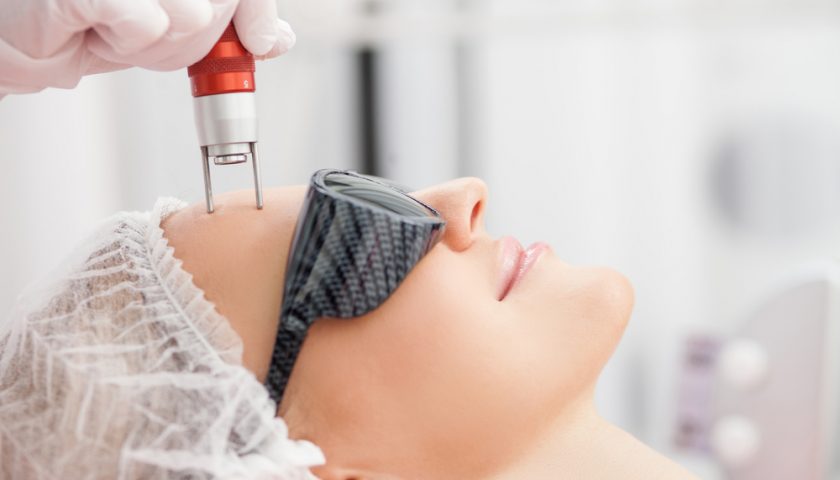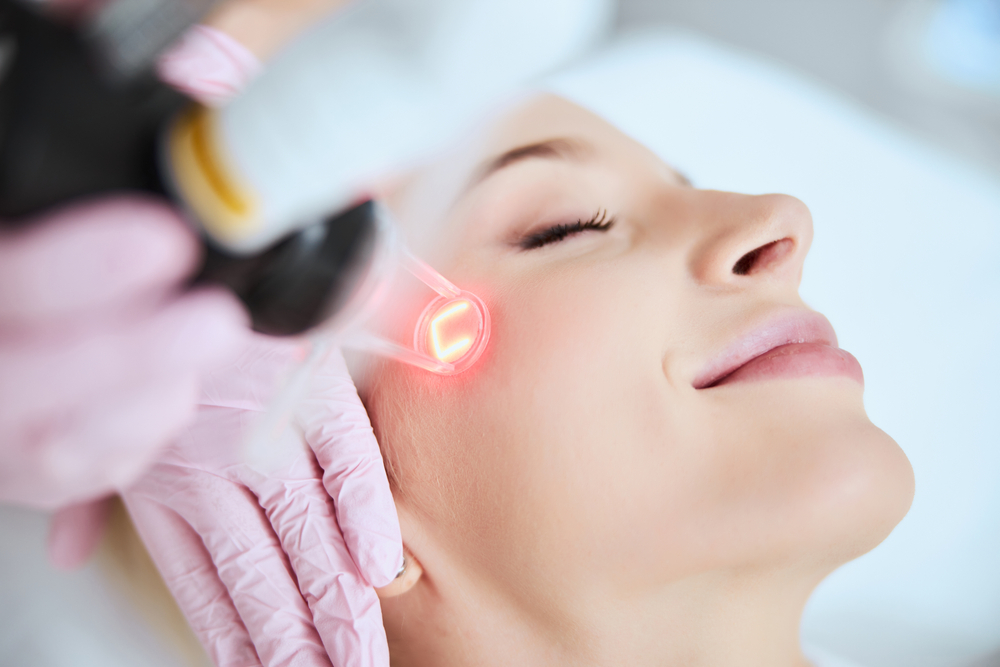Glass skin. We all desire it. Yet most of us, regardless of age, are unable to achieve that dewy, airbrushed look.
So, what can help you to get that spotless, wrinkles free, and healthy skin you dream off?
If you need a supercharged answer, laser resurfacing is the best option.
What is laser resurfacing? Why is it done? What is the procedure and possible side effects?
To learn in detail about this cosmetic procedure, read the following post.
Table of Contents
What is Laser Resurfacing?
So, what precisely is a laser resurfacing?
It is a method that harnesses the power of light and heat to improve skin tone, texture, and colouring. It accomplishes this by inflicting a controlled harm on the tissue, which prompts the body to respond with a healing reaction that improves the appearance.
It is done to improve your complexion, treat loss of skin tone, and reduce fine wrinkles. However, excessive or sagging skin cannot be removed with laser resurfacing.
Also get to know about dermabrasion facials.
What are Types of Laser Resurfacing Treatment for Face?
There are two major types of laser resurfacing treatment for the face.
1- Ablative Laser
This laser burns the underlying skin (dermis) and removes the thin outer layer of skin (epidermis), stimulating the formation of collagen – a protein that improves skin firmness and smoothness. The treated region appears smoother and tighter as the epidermis heals and regrows.
Some examples of ablative laser are:
- Carbon dioxide (CO2) laser
- Erbium laser
2- Non Ablative Laser
This method also promotes collagen production. It’s less aggressive than an ablative laser and takes less time to recover from. However, the results are less visible.
Some examples of non ablative laser are:
- Pulsed dye laser
- Intense pulsed light (IPL) therapy
Why is it Done? And who Can Get This Procedure?
Face laser treatment is done to treat:
- Fine wrinkles
- Age spots
- Sunburned skin
- Acne scars
- Uneven skin tone
- Enlarged oil glands
- Warts
So, if you have age-related, sun-related, or acne-related skin issues that aren’t treated with over-the-counter (OTC) products, you might consider laser skin resurfacing.
NOTE: This procedure may not be suitable for people with active acne breakouts or excessive sagging skin.
What is the Best Time to Have Laser Skin Resurfacing?
Are you aware that fall is known as ‘laser season’?
Many cosmetic surgeons from the best dermatologist hospitals advocate laser resurfacing during the fall or winter months, when daytime hours are shorter and you spend most of your time indoors. Because laser-treated skin remains hypersensitive to sun exposure for up to a year after some treatments.
According to the top reviewed dermatologist in Lahore, Dr. Fatima Zaman, “Wear a broad-spectrum SPF 30 or higher sunscreen everyday and reapply as needed, regardless of when you have your laser operation.” This not only keeps your results looking their best, but it also protects you from skin cancer and helps you avoid premature ageing.
A dermatologist might also suggest some tests of an indepth laser is required.

What to Expect from the Procedure? Before and After
As mentioned before, laser resurfacing heats the lower layers of the dermis while targeting the outer layer of your skin which enhances collagen production. Now, let’s dig into the steps of this procedure.
Before Laser Resurfacing
Your skin must be prepped before laser skin resurfacing. A set of therapies are done or suggested by your doctor several weeks before the procedure. The goal is to make your skin more resistant to expert treatments. It can also help you avoid unpleasant side effects.
On the Day of Laser Resurfacing
Your doctor will apply a topical anaesthetic to the treatment region the day of the operation. This is used to make you more comfortable during the treatment by reducing pain. If you have a wide region of skin to treat, your doctor may recommend a sedative or pain reliever.
The skin is then washed to remove any remaining oil, debris, or bacteria. Your doctor will begin the therapy with the laser of your choice. The laser is progressively moved around the skin’s chosen area.
After Laser Resurfacing
The treated skin will be raw, puffy, and irritating after ablative laser resurfacing. Your doctor will apply a thick ointment to the affected area and maybe cover it with an airtight and waterproof covering.
What is the Recovery Time?
In case of ablative laser therapy, new skin covers the area in one to two weeks, and full recovery takes at least a month.
However, recovery period is brief after non ablative laser resurfacing. For a few hours, your skin may feel puffy or inflamed. You can apply ice packs to get relief.
Some Tips During Recovery Period
During this period:
- Avoid using any cosmetics or other items that may irritate your skin.
- Avoid situations that increase your risk of infection, such as public whirlpools.
- Always use sunscreen after laser resurfacing.
What to Expect from Results?
Non-ablative laser treatments are less likely to cause side effects, but you may need many sessions to get the results you want. Ablative lasers, on the other hand, may be able to resolve your issues in just one session.
What are the Possible Side Effects and Risks?
Laser skin resurfacing, like other cosmetic procedures, has the potential for negative side effects. The laser side effects on face include:
- Swelling
- Burning
- Infection
- Bumps
- Redness
You can lower your risk of these issues by following your doctor’s pre- and post-care recommendations. A preventive antibiotic or antiviral medicine may be provided based on your medical history.
Also learn about possible side effects of skin whitening injections.
How to Select Your Dermatologist?
It’s critical to deal with a skilled dermatologist because this operation is so delicate. Rather than choosing the first dermatologist you come across, you should interview many candidates.
Ask your dermatologist the following questions before scheduling a laser skin treatment:
- What kind of laser skin resurfacing experience do you have?
- What has been your experience with my skin tone and concerns?
- Do you have a portfolio of your clients’ before-and-after photos?
- What can I expect during the healing process?
- How many sessions do you believe I’ll require?
If you are considering getting this procedure done, you can find the best dermatologists near you via Healthwire.pk.
